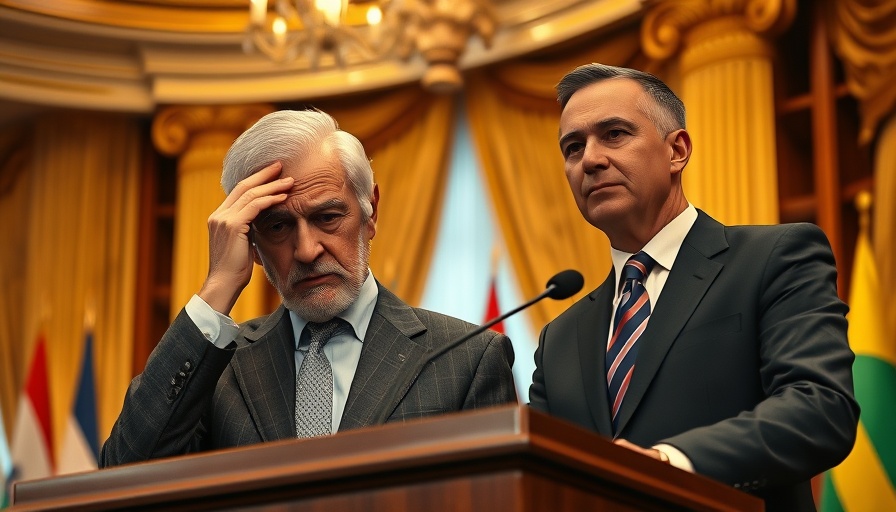
A Shocking Revelation: Big Pharma's Influence on Politics
In a surprising twist during a recent press conference, Robert F. Kennedy Jr. (RFK Jr.), the U.S. Health Secretary, let slip a claim that has left both political analysts and citizens reeling—he stated that Donald Trump had received $100 million from the pharmaceutical industry. While the intention behind this revelation seemed to be to portray Trump as unaffected by this funding, it has sparked rampant speculation about the cozy ties between big pharmaceutical companies and political leaders.
What Does This Mean for Public Trust?
Americans have increasingly voiced concerns regarding the influence of big money in politics, particularly from industries like pharmaceuticals, which directly affect their health and finances. RFK Jr.'s comments raise troubling questions about transparency and integrity within the government. Critics quickly labeled the statement as either a “Freudian slip” or an outright strategic distraction from ongoing political battles, particularly those surrounding Medicaid and healthcare funding policies.
Context and Implications for Healthcare Policies
The announcement of the executive order intended to reduce prescription drug costs for Americans has been met with skepticism. Analysts suggest that RFK Jr.’s comments aimed to bolster the image of the administration while obfuscating the substantial ties Trump has with the very industry he seeks to regulate. Financial markets reacted quickly, with pharmaceutical stocks rising sharply following the conference. This reaction raises concerns that the executive order may not deliver as promised—a sentiment echoed by experts like Kim Monk, who noted the vagueness of the order in predicting real change.
Exploring the Public Response: Mistrust and Skepticism
The online response to RFK Jr.’s revelation has been fiery. Comments across TikTok and Twitter reflect disbelief and critique, as social media users dissect the implications of such funding on their health decisions. Skepticism towards the government’s intentions in addressing drug prices generalizes a wider dissatisfaction with how healthcare issues are handled in the U.S. This sentiment is particularly resonant among younger audiences who prioritize health equity and transparency from their leaders.
Future Predictions: Will This Shape Election Outcomes?
As the political landscape evolves, the intersection of healthcare policy and campaign financing will likely become a pivotal topic in future elections. With the unveiling of such financial ties, candidates are urged to engage in honest discourse regarding their funding sources. The potential for increased voter apathy grows, as citizens begin to feel powerless against what appears to be the influence of corporate money over public interest. This discourse may catalyze a movement towards campaign finance reform, impacting who voters choose to support moving forward.
Actionable Insights: What Can You Do?
Citizens can take a proactive stance in this unfolding narrative. Here are a few steps to consider:
- Stay Informed: Following credible news sources and health reports will provide a clearer picture of how these political dynamics evolve.
- Engage in Dialogue: Discuss with friends and family the implications of such revelations to raise awareness and foster informed discussions.
- Advocate for Transparency: Support policies that promote transparency in campaign financing and challenge corporations to uphold ethical standards.
In a health landscape significantly affected by political decisions, being informed and engaged is integral to ensuring that personal health remains a priority over corporate interests.
Concluding Thoughts
The intertwining of big pharma funding and political powers raises more questions than answers. With ongoing debates about drug prices and healthcare reform, it remains vital for citizens to both scrutinize and demand clarity from their leaders. Only through active engagement can we hope to navigate the complexities of our health policies and their impacts on lives.
 Add Row
Add Row  Add
Add 




Write A Comment